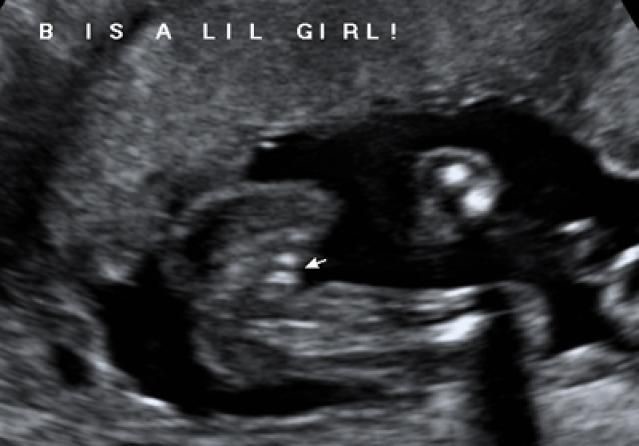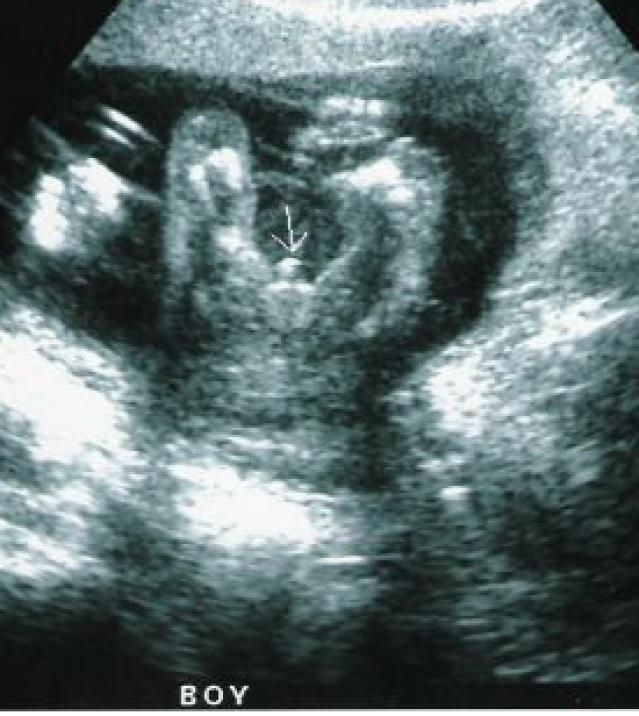Many expectant parents are thrilled to go into their 20-week ultrasound, because they finally get to know whether their baby is a boy or a girl! The boy or girl ultrasound is one of the most fun things for parents, and can be scheduled anytime between 18 and 22 weeks.
When Can I Tell the Sex of the Baby?
The big “boy or girl ultrasound” is usually done at the midpoint of pregnancy, and it is very comprehensive. Known as a fetal anatomy survey, the ultrasound looks at every part of your baby, not just the private bits. Keep in mind that any ultrasound before 18 weeks is not going to be very reliable when it comes to determining gender, as your baby is likely just too small. Some highly sensitive equipment might detect gender as early as 12 or 13 weeks, but this is not very likely in most pregnancies.
How to Tell Whether It Is a Boy or a Girl?
Via Genitals


Figuring out your baby’s gender can be tough during the boy or girl ultrasound, as the umbilical cord might get in the way. You will have to be certain that you are looking at a penis and not a cord, which can be tough to differentiate. For boys, most technicians look for the “turtle sign,” which is exactly what it sounds like: From the underside, the genitalia look like a little turtle on the screen. That’s the penis itself and the testes on either side of it. For a girl, technicians look for the “hamburger sign,” which is made up of the labia and the clitoris in the middle.
Via the Position of Placenta--The Ramzi’s Method
This method is somewhat controversial, but many women like to look to it as a possible indication of the baby’s gender before the boy or girl ultrasound is done. The Ramzi’s Method says that at six weeks of pregnancy, over 97 percent of male babies had a placenta that was attached on the right side of the uterus, while over 97 percent of girls had a placenta attached on the left.
Here are two videos of the 20 week baby ultrasound.
Baby boy:
Baby girl:
What Is the Accuracy of the Ultrasound?
When the ultrasound is done after 18 weeks, there is a very high accuracy rate, which ranges from 80 to 99 percent. The earlier your pregnancy is, the less likely you will get an accurate determination on the boy or girl ultrasound. Waiting until you are closer to 20 weeks usually gives you an accuracy rating of over 94 percent. However, a very experienced technician might have numbers closer to 100 percent accuracy.
What Could Affect the Results?
There is a good chance your ultrasound could be incorrect. Here are reasons why an ultrasound technician may get your baby gender wrong.
1. Timing of the Ultrasound
To get an accurate reading, your boy or girl ultrasound must be performed on the right dates. If you are a little “off” with your dates, or unsure of how far along you are, the timing might not be right to tell you whether you are having a boy or a girl.
2. Baby Position
Sometimes a baby simply refuses to cooperate. They might be curled up into a ball so you can’t see the gender, or they might move the wrong way as the technician tries to find out. There is nothing that can be done about this, so you might just have to wait until the next ultrasound!
3. Womb Conditions
The more amniotic fluid around your baby, the clearer the ultrasound images will be. If you don’t have much fluid, or if your bladder is not full, you might have trouble seeing the gender. If there are problems with the womb or placenta, that might also block the view. Try to drink lots of water before the examination in order to enhance your chances.
4. Technician Experience
How experienced is your technician? Those who have been doing ultrasounds for years can catch things that others don’t, and that means that your baby’s gender might be determined easily by someone who has done thousands of them. A new technician might not have seen enough babies yet to be accurate.
